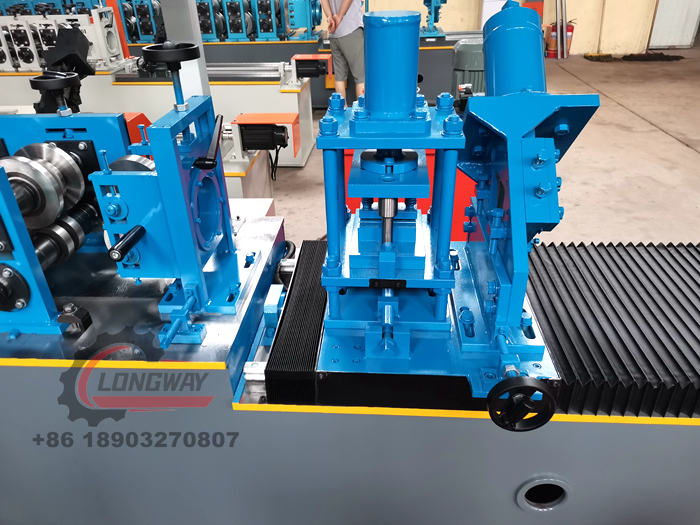Efficient Solutions for Metal Roofing Roll Forming Machines and Equipment
Understanding Metal Roofing Roll Formers A Comprehensive Overview
In recent years, the popularity of metal roofing has soared, thanks to its durability, energy efficiency, and aesthetic appeal. One of the key components that facilitate the production of metal roofing materials is the metal roofing roll former. This specialized piece of machinery is essential for manufacturers aiming to produce high-quality roofing panels efficiently. In this article, we will explore what metal roofing roll formers are, how they operate, and their significance in the roofing industry.
What is a Metal Roofing Roll Former?
A metal roofing roll former is a machine designed to shape and cut metal sheets into various roofing profiles. These machines operate on the principles of cold rolling, whereby metal sheets are fed through a series of rollers that progressively shape the material into a desired profile. The end result is a strong and attractive roofing panel, capable of withstanding the elements while also enhancing a building's aesthetic.
How Do Metal Roofing Roll Formers Work?
The operation of a metal roofing roll former can be broken down into several key stages
1. Metal Sheet Feeding The process begins with large coils of metal, typically made of steel or aluminum, which are loaded onto the machine. These coils are unwound and fed into the forming section of the machine.
2. Roll Forming As the metal sheet moves through the roll former, it passes through multiple sets of rollers. Each set is designed to perform a specific bending or shaping operation. By the time the sheet exits the machine, it has been transformed into a precisely contoured roofing panel.
3. Cutting After the panel has been formed, it is usually cut to length according to specific requirements. This is often done using a hydraulic or electric cutting mechanism that ensures a clean and accurate cut.
4. Finishing Touches Some roll formers also incorporate additional features, such as embossing patterns or applying protective coatings, which can enhance the aesthetic and functional qualities of the roofing panels.
metal roofing roll former

The Significance of Metal Roofing Roll Formers
The advantages of using metal roofing roll formers are manifold
- Efficiency These machines allow for the mass production of roofing panels, significantly reducing labor costs and production times compared to traditional metalworking methods.
- Precision Roll formers provide a high degree of accuracy, which is essential for ensuring that each panel meets stringent industry standards. This precision minimizes waste and increases the overall quality of the end product.
- Flexibility Different profiles can be created using the same roll forming machine, allowing manufacturers to offer a diverse range of roofing styles to meet the varying preferences of their clients.
- Durability The panels produced by these machines are not only visually appealing but also built to last. Metal roofing offers excellent resistance to weather conditions, making it a preferred choice for both residential and commercial applications.
- Cost-Effectiveness Despite the initial investment in a roll former, the long-term savings associated with reduced labor and material waste can be substantial, making it a cost-effective solution for roofing manufacturers.
Conclusion
Metal roofing roll formers play a crucial role in the roofing industry, enabling manufacturers to produce high-quality metal roofing panels with efficiency and precision. As the demand for durable and aesthetically pleasing roofing solutions continues to rise, the importance of these machines will only grow. Whether you are a manufacturer looking to invest in a roll former or a consumer interested in the benefits of metal roofing, understanding the intricacies of this machinery is essential. With its ability to deliver both functionality and style, metal roofing remains a top choice for a wide range of architectural projects.
-
Roof Panel Machines: Buying Guide, Types, and PricingNewsJul.04, 2025
-
Purlin Machines: Types, Features, and Pricing GuideNewsJul.04, 2025
-
Metal Embossing Machines: Types, Applications, and Buying GuideNewsJul.04, 2025
-
Gutter Machines: Features, Types, and Cost BreakdownNewsJul.04, 2025
-
Cut to Length Line: Overview, Equipment, and Buying GuideNewsJul.04, 2025
-
Auto Stacker: Features, Applications, and Cost BreakdownNewsJul.04, 2025
-
Top Drywall Profile Machine Models for SaleNewsJun.05, 2025








